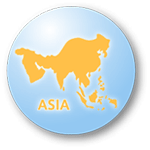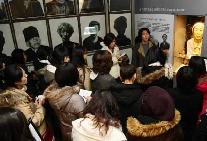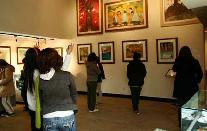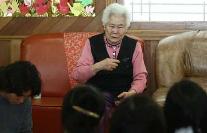ASIA
The House of Sharing, History Museum of Japanese Military Comfort Women (South Korea)
(July 13, 2008)
by Ippei Murayama, Researcher
“Why on earth do you have bigger apples?” “You have more apples than I do!” When gifts are delivered, dividing them equally is a major event among the elderly women at the House of Sharing. The women, over 80 years of age, squabble, cry, and laugh like children.
The House of Sharing is a facility where the women who suffered sexual violence by the Japanese military live together. Supported by Buddhist organizations, the House of Sharing expanded its activities in Seoul in 1992. It was then relocated to Kwangju-si, Kyunggi-do in 1995 when it began operations as a social welfare nonprofit corporation.
Seven women currently live together at the facility, as two residents passed away earlier this year. Park Onlyeon, the eldest resident at the age of 90, was tricked and forcibly taken to Papua New Guinea. Bae Chunhui, 85, lived in Japan for about 30 years, and Kim Sunok, 87, hasn’t been back to her hometown of Pyongyang since she was nine years old.
The History Museum of Japanese Military Comfort Women, adjacent to the House of Sharing, was built in 1998. The annual number of visitors to the museum exceeds 5,000 people and half of these are from Japan. They tend to be members of citizen groups, students, and others involved in peace programs.
The History Museum has six exhibit rooms located both inside and outside the building. The exhibits include archives left by the Japanese authorities, military-related documents, and an explanation of the “comfort women” system conducted by the Japanese military. Drawings produced by the women, along with their mementos, are also on display. Visitors can gain a deeper understanding of the actual conditions of the women’s suffering by viewing a replica of a “comfort house” and portraits of victimized women as well as by listening to the residents’ testimonies.
The History Museum of Japanese Military Comfort Women is a place that reminds the world of the lives these women have led. It is entrusted with the mission of making people aware of the pain wrought upon these “comfort women” by sexual violence.
Address: #65 Wondang-ri, Twoichon-myon, Kwangju-si, Kyunggi-do, South Korea 464-840
Tel: +82-(0)31-768-0064
Homepage: http://www.nanum.org
Days Closed: Mondays and Wednesdays
Admission: Adults/College Students: 5,000 won (about 520 yen) for admission and video screening;3,000 won for admission only
Elementary to High School Students: 3,000 won
People 65 or over/people with disabilities: Free
Group discounts are available.
(Originally published on July 7, 2008)
 Peace Museums of ASIA
Peace Museums of ASIA


